Beyond Practice: The Strategic Advantage of Private Music Lessons
The Competitive Advantage Most Student MusiciansOverlook — and Why It Matters More Than Ever inCollegiate Music Admissions and Scholarships.
Read More
AccoladiFineArtsDirector.com is built for district fine arts leaders who oversee and shape the success of performing arts programs. Here, you'll find resources and tools to help you support your teachers, guide your students, and connect with collegiate recruiters who are eager to discover emerging talent.
While fine arts directors are at the center of this site, we also serve performing arts students and their families, collegiate and summer enrichment recruiters, and teachers. To ensure each group has the right fit, we've created dedicated websites:
Fine Arts Directors: this is your home base. Please continue your registration for your district/school here on AccoladiFineArtsDirector.com.
Everyone else: begin your journey at the site designed for your role.
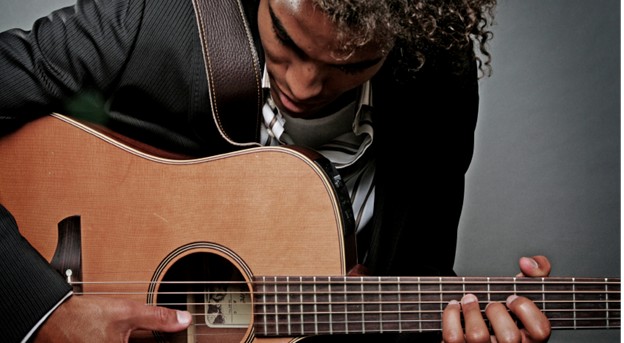
Discover how community college can launch your music career—with less stress and a lot more savings.
Pursuing a college music degree can set you on the path to a fulfilling career in music that aligns with your life's mission. But how do you navigate this journey? While most people opt for the traditional four-year institution, this choice often comes with a hefty price tag. Is there an alternative route that is both less conventional and more affordable? Absolutely. The answer lies in the community college system.
Starting your education at a community college and earning an associate degree that can transfer to a four-year institution is a savvy approach. This pathway often reduces the cost of a college degree by half, or sometimes even more. Community colleges offer a cost-effective and flexible solution, allowing students to achieve their academic and career goals without the financial burden typically associated with four-year colleges.
As aspiring music majors transition from high school to college, they must also navigate the costs associated with adulting. This period of life brings several significant milestones, each with its own financial implications.
| One Bedroom Apartment | $16,800 |
| Driving in Town | $2,028 |
| Food | $8,039 |
| Social Life (22%) | $5,910 |
| Community College Tuition | $2,370 |
| Total | $35,147 |
For traditional college-bound students, the expenses extend far beyond tuition. Room and board often surpass the cost of tuition itself, and when you factor in the social aspects of college life, the financial burden grows significantly. Research indicates that the social experience can add approximately 22% to the combined cost of tuition and room and board.
| Type of School | Tuition | Adulting Expense | Total |
|---|---|---|---|
| In-State State School | $112,000 | $24,640 | $136,640 |
| Out-of-State State School | $150,400 | $33,080 | $183,480 |
| Private School | $152,280 | $33,301 | $185,781 |
Let’s break down these costs for aspiring music majors. At most US state-supported schools with in-state tuition, the total cost for four years is around $112,000, based on an annual expense of $28,000. For out-of-state students, the annual cost rises to $37,600, totaling $150,400 over four years. At private institutions, the average yearly cost is about $38,070, amounting to $152,280 for a four-year degree.
These figures highlight the substantial financial commitment required for a traditional college education. By understanding the full scope of these expenses, students can better plan and manage their finances as they pursue their music degrees.
When considering the two-year community college route, it's important to recognize that the cost of adulting often surpasses the expense of tuition, particularly if you plan to move away from home. Unlike traditional four-year institutions, community colleges typically do not offer housing options. This means that independent students must account for the full cost of living away from home.
This raises the question: Is the community college path still the more affordable option? While tuition at community colleges is generally lower, the added expenses of rent, utilities, and other living costs can significantly impact the overall budget. Careful consideration and financial planning are essential to determine if this path remains the more economical choice for pursuing a music degree.
Once perceived as offering a "less-than" educational experience, community colleges have undergone a significant transformation. Today, their academic credentials often rival those of many small state schools. A quick glance at the biographies of community college professors and instructors reveals qualifications comparable to those at four-year institutions. In some cases, community colleges, particularly those in large metropolitan areas, even offer superior instruction.
This high level of instruction is partly due to the flexible schedules that community colleges provide, attracting symphony performers and other professionals who moonlight as instructors. Additionally, areas with multiple colleges and universities often see non-tenured faculty and doctoral students taking part-time roles at community colleges. This influx of highly qualified educators ensures that the level of instruction matches that of prestigious institutions in the same region.
Furthermore, the facilities at community colleges are frequently on par with those of state-supported schools. Supported by both state and municipal funds, community colleges often benefit from a robust tax base in metropolitan areas, resulting in well-equipped facilities. In some instances, these facilities can even surpass those of state-supported colleges and universities. This combination of experienced faculty and high-quality resources makes the community college experience a compelling and valuable option for students pursuing higher education.
Starting your music degree at a community college comes with numerous benefits. Firstly, most community colleges have open-enrollment policies, meaning no ACT or SAT scores are required for admission. This makes them an excellent choice if standardized tests aren’t your strong suit.
Secondly, community colleges typically offer smaller class sizes. This can be particularly advantageous if you need extra support in music theory, sight singing, or tonal diction, providing a welcoming environment to build a solid foundation in these areas.
Thirdly, if your high school private lesson experience was minimal or non-existent, the studio experience at a community college can feel less intimidating. You can ease into private instruction without the pressure often found in larger institutions.
Fourthly, while you will be required to participate in ensembles, these are usually scheduled during the academic day, and most community colleges do not have marching bands. This frees up time to engage with local high school programs or other musical opportunities.
Lastly, and perhaps most importantly, is the cost. Attending a community college is generally about 91% less expensive than attending a state-supported institution, and even less than attending out-of-state or private colleges and universities. This significant cost savings can make a huge difference in managing your educational expenses while pursuing your passion for music.
Admittedly, delaying the full cycle of adulting for two years by attending a community college is one of the most cost-effective strategies for pursuing a music degree. This approach involves spending two years at a community college and then transferring to a four-year institution for your junior and senior years, significantly reducing the overall cost.
When considering this path, it’s important to look at the arrangements between community colleges and state-supported institutions. In many cases, no audition is required for transfer, and some transfers are even automatic. These automatic transfers are often referred to as 2-to-2 articulation agreements. For example, students who successfully complete two years of the music and academic core curriculum at Brookhaven College in Farmers Branch, Texas, can automatically transfer as music majors to the University of North Texas. Similarly, students at Palo Alto College in San Antonio can transfer automatically as music majors to the University of Texas at San Antonio.
Out-of-district and out-of-state students can also take advantage of community college programs, though they may face slightly higher fees. However, these fees vary by community college, and not all institutions increase their rates for out-of-district students.
Overall, starting at a community college offers a financially savvy way to pursue a music degree, providing quality education and seamless transfer options to four-year institutions.
Out-of-district and out-of-state students can also take advantage of community college programs, though they may face slightly higher fees. However, these fees vary by community college, and not all institutions increase their rates for out-of-district students.
Overall, starting at a community college offers a financially savvy way to pursue a music degree, providing quality education and seamless transfer options to four-year institutions.
There are numerous factors to consider when selecting the community college path, but the most compelling one is financial. One of the greatest advantages is the availability of scholarships at many community colleges, which can bring the cost of attendance to less than $1,000 per semester. While this might not seem like the most glamorous option when you're 18, your 35-year-old self will be grateful for the financial freedom that comes from having your college loans paid off. Opting for the community college route is not just a smart educational choice—it's a strategic investment in your future.
.png) ARTICLE GLOSSARY
ARTICLE GLOSSARY
Adulting: A term used to describe taking on responsibilities typically associated with adulthood, such as paying bills, maintaining insurance, managing time, or living independently.
Articulation Agreement: A formal partnership between a community college and a four-year university that allows students to transfer credits—and often entire degrees—without losing time or needing to re-audition.
Audition: A performance used to assess a student’s musical ability, typically required for acceptance into college music programs, ensembles, or private studios.
Conservatory: A school or specialized program focused on intensive music education, often offering pre-professional training in performance, composition, or other musical fields.
Ensemble: A group of musicians who rehearse and perform together, such as a choir, band, or orchestra. College music majors are typically required to participate in one or more ensembles.
Financial Aid: Money provided to students to help pay for college costs. This may come in the form of scholarships, grants, work-study jobs, or loans.
In-State Tuition: Reduced tuition rates offered to residents of the state where a public college or university is located. Generally lower than out-of-state or private tuition.
Instrumental Music: Music performed using instruments (e.g., wind, string, brass, or percussion), as opposed to vocal music.
Master Class: An advanced music lesson typically taught by a guest expert where students perform and receive public feedback in front of peers.
Music Major: A college student whose primary area of academic focus is music. This includes studies in performance, education, composition, or theory.
Music Theory: The study of how music works—including the structure of scales, chords, rhythms, harmony, and musical form. Often a required subject for music majors.
Open Enrollment: A policy allowing any student with a high school diploma or GED to enroll in college courses without meeting specific test score requirements.
Out-of-District Tuition: The cost for students attending a community college outside their designated local area, which may be higher than in-district rates.
Out-of-State Tuition: Higher tuition rates charged to students who reside outside the state of the public college or university they attend.
Private Lessons: One-on-one instruction with a music teacher or coach focusing on an individual student’s technique, repertoire, and musicianship.
Room and Board: The cost of living on campus, which includes housing (room) and meals (board). Often a separate and significant expense from tuition.
Sight Singing: The ability to read and vocally perform music at first sight using correct pitch and rhythm. Frequently tested in music program auditions.
Studio Experience: Private music instruction within a college setting, often part of a student’s degree requirements. This includes lessons, juries (evaluations), and studio classes.
Transfer Pathway: A planned academic route where a student begins at one institution (like a community college) and transfers to another (a university) to complete their degree.
Tuition: The base cost of attending college classes, not including additional expenses like books, housing, or fees.
Objective: Students will be introduced to the concept of college costs, including tuition and life expenses, through the lens of music education. They will explore how community colleges can provide an affordable and achievable starting point for a music career and reflect on how early planning helps achieve big dreams.
Assignment Overview:
In this assignment, you'll imagine what it might be like to go to college as a music student. You'll create a short “College Dream Board” to visualize your goals and a paragraph explaining how starting at a community college could help make your dream come true.
Instructions:
Due Date: _______________________
Grading Rubric (Total: 40 Points)
| Category | Excellent (10 pts) | Good (8 pts) | Developing (6 pts) | Needs Help (4 pts) |
|---|---|---|---|---|
| Creativity of Dream Board | Shows strong effort and originality | Clear message, some creative touches | Basic effort, needs more thought | Incomplete or lacks focus |
| Connection to Music Goals | Music goals are clear and well-expressed | Goals are included, somewhat clear | Vague connection to music | Not clear or missing |
| Understanding of Community College | Explains idea well with examples | General understanding | Shows basic idea | Not clear or inaccurate |
| Writing Clarity and Effort | Well-written with full sentences | Mostly clear with few mistakes | Some unclear sentences | Needs support with writing |
Grading Scale
Objective: Students will analyze the financial, academic, and personal advantages of beginning their music degree at a community college, then compare this route to traditional four-year college pathways. They will demonstrate their understanding through a comparative cost analysis and a reflective essay on the impact of financial planning in pursuing a music degree.
Overview:
You will explore two potential pathways to earn a bachelor's degree in music:
You will:
Instructions:
Step 1: Research and Compare
Using real colleges (choose one community college and one four-year university in your state or region), gather the following data:
Step 2: Cost Comparison Worksheet
Complete a table comparing:
Step 3: Reflective Essay (250–300 words)
Answer the following:
Due Date: _______________________
Grading Rubric (100 Points)
| Category | Excellent (25 pts) | Good (20 pts) | Satisfactory (15 pts) | Needs Improvement (10 pts) |
|---|---|---|---|---|
| Cost Comparison Accuracy | Accurate, complete data from real schools with totals clearly calculated | Minor data issues; totals mostly accurate | Some missing or unclear data; minor errors in totals | Major errors or incomplete data |
| Critical Thinking | Demonstrates strong financial insight and real-world application | Shows thoughtful analysis with a few assumptions | Basic understanding; some generalizations | Lacks analysis or misunderstanding of concepts |
| Connection to Article | Directly references key points from the article | Some reference to the article | Minimal reference | No reference to article concepts |
| Writing Quality & Clarity | Clear, organized, with strong voice and grammar | Mostly clear with few grammar issues | Lacks organization or has multiple grammar issues | Difficult to follow; many errors |
Grading Scale
| Score Range | Letter Grade |
|---|---|
| 90–100 pts | A |
| 80–89 pts | B |
| 70–79 pts | C |
| 60–69 pts | D |
| Below 60 pts | F |
Dear ______________Parents,
It might feel early to talk about college—but in music education, we’re always working a few steps ahead. Whether your child is just picking up their instrument or already dreaming about a future in music, now is a great time to begin thinking about how their passion can become a lifelong journey.
One of the most helpful resources I’ve come across recently is a parent-friendly article from Accoladi.com titled: “A Budget-Friendly Route to Your Music Career: Community College.”
This article is full of insight—not just for high school seniors, but for parents of younger students, too. It explains how community colleges can serve as an affordable and empowering first step for students who want to pursue a college degree in music. Families can save tens of thousands of dollars by starting at a community college, without sacrificing the quality of education or the opportunity to transfer to a top university.
Even more importantly, the article reminds us that college is just one part of the bigger picture. As students grow, they’ll also face the “costs of adulting”—things like transportation, rent, insurance, and everyday living expenses. Beginning the college journey close to home can ease that transition and reduce financial stress, especially for those studying music, where the demands are unique.
I encourage you to read the full article on Accoladi.com, not because it’s time to make college decisions—but because it's never too early to be informed. Knowing the options helps us support our children wisely as they grow.
And who knows? That trumpet player in your living room might just be a college music major one day.
Musically Yours,
____________________________________________ [Director’s Name and Position]
_________________________________________________________ [School Name]
Dear _____________Parents,
As your child begins to dream about their future in music, it’s natural to imagine big stages, college auditions, and exciting opportunities. But there's another part of the dream that matters just as much—the financial path they’ll take to get there.
College is a major investment. And for music majors especially, the costs can add up fast: tuition, room and board, books, private lessons, instruments, and more. That’s why I want to encourage you to read a practical, eye-opening article featured on Accoladi.com: “A Budget-Friendly Route to Your Music Career: Community College.”
This article doesn’t just share information—it sparks real conversation. It explores how community college can serve as a powerful launchpad for music students, offering:
It also reminds us that college isn’t just about tuition—it’s about navigating “adulting” costs like housing, food, transportation, and insurance. For many students, staying close to home and beginning at a community college provides both academic grounding and financial freedom.
If your child is dreaming of a future in music—but you’re wondering how to make that dream affordable—I highly recommend taking a few moments to read the article and discuss it as a family.
You can find it here: Accoladi.com.
Let’s help our students plan wisely so their passion for music isn’t weighed down by unnecessary debt. Sometimes, the smartest path forward begins right here at home.
With gratitude for Your Partnership,
____________________________________________
[Director’s Name and Position]
_________________________________________________________
[School Name]
Format: Solo episode (Dr. Dewitt throughout, with Host for intro and outro only)
Tone: Warm, clever, insightful, with gentle humor and uplifting energy.
[Intro Music] Warm, confident underscore with light percussion. Fades under voice.
HOST (Voiceover): Welcome to People Over Programs—where the spotlight is always on the student, and every note has a purpose.
Today’s episode: "A Budget-Friendly Route to Your Music Career: Community College."
Our guest is Dr. Karen Dewitt, Fine Arts Director of Hinkley Valley School District and Director of the Hinkley Valley High School Fine Arts Conservatory. Let’s dive in.
[Music fades. Dr. Dewitt begins speaking.]
DR. DEWITT: Let’s be honest—when most people picture their child heading off to college to study music, they don’t imagine community college.
They picture ivy-covered buildings, a marching band roaring across a football field, or late-night jam sessions in dorm lounges.
And I get it. I had those same dreams too. But here’s the truth—dreams still come true at community college... they just come with fewer student loans and a bit more financial wisdom.
I’m Dr. Karen Dewitt, and before I ever stepped foot into Brigham Young University as a transfer student, I started my college music education at a community college in Pennsylvania. And it was one of the smartest choices I ever made—musically and financially.
Here’s what nobody tells you: tuition is just the downbeat. The real costs of college? They sneak in like a dissonant chord in a Bach chorale.
Let’s talk about adulting, shall we?
[Brief musical interlude: light pizzicato strings with humor.]
DR. DEWITT: First comes the car—because apparently, being a music major requires an instrument, a gig bag, and 1,000 miles of mileage per semester.
Then comes insurance… because, well, it’s illegal not to have it.
Next? A job. Because once you realize your clarinet reeds cost more than your weekly groceries, that after-school barista gig starts looking pretty sweet.
And finally, the big one: moving out. Rent, utilities, Wi-Fi, frozen pizzas, toothpaste—suddenly, you understand why your parents only run the dishwasher once a day.
All of this stacks up while you're trying to practice, perform, rehearse, and pass Music Theory II without crying into your staff paper.
Now imagine cutting that cost in half. Or more.
[Musical transition: inspiring strings swell briefly.]
DR. DEWITT: Community colleges offer a brilliant alternative—especially for music students.
No ACT or SAT? No problem.
Need extra help in sight-singing or theory? Smaller classes = more support.
Not quite ready to solo in front of a full studio panel? Community college gives you a softer landing.
And the ensembles? They still challenge you. But without the 6 a.m. marching band call times.
At Hinkley Valley, we talk about music as a lifetime journey. But here’s the thing: if your journey starts with $80,000 in debt, it’s a lot harder to enjoy the ride.
That’s why I’m passionate about what this article on Accoladi.com lays out—a community college path that saves money without sacrificing excellence.
[Music: thoughtful and gentle transition.]
DR. DEWITT: Let me also say this: community colleges have changed. A lot.
Today, many have state-of-the-art facilities, top-tier instructors (some who moonlight in symphony orchestras!), and seamless transfer agreements with major universities. No extra audition. No drama. Just a straight path forward.
And in places like ours—where musical literacy begins in Kindergarten and violin is introduced in 3rd grade—we're raising students who are already prepared for college-level thinking by the time they’re in high school.
So, if you’re a parent listening to this and wondering if community college might be “settling”—I promise you: it’s not. It’s smart. It’s strategic. And your child’s talent will still shine.
Whether your child dreams of Broadway or Berklee, a smart financial start gives them the freedom to dream bigger, not smaller.
[Pause. Music swells briefly—then fades under next words.]
DR. DEWITT: So, here's your assignment, parents—yes, I give parents assignments too! Go to Accoladi.com and read the full article: “A Budget-Friendly Route to Your Music Career: Community College.”
Print it. Share it. Highlight it with a yellow marker like it’s Music Theory homework.
And most importantly—talk about it with your student. College should be exciting, not overwhelming. We can’t control every expense, but we can control how we prepare for them.
Remember, your 18-year-old may want a four-year party.
But your 35-year-old will thank you for the financial freedom that came with a little wisdom.
[Outro Music: Upbeat, hopeful underscore with light piano and percussion.]
HOST (Voiceover): That’s it for this episode of People Over Programs. Thanks to Dr. Karen Dewitt for sharing her insight, her story, and her steady beat of encouragement.
To read the full article she mentioned, visit Accoladi.com and look for: “A Budget-Friendly Route to Your Music Career: Community College.”
Until next time—keep the music strong, the dreams bold, and we’ll keep our programs always centered on people.
[Opening shot: Dr. Karen Dewitt sits on a stool, casual but professional, holding a music folder or next to a piano or instrument stand.]
[Light background beat with a modern, student-friendly vibe fades in and out]
DR. DEWITT (smiling): Hey there, musicians. I’ve got a quick question for you…
Have you ever dreamed about going to college for music?
Maybe it’s playing sax at a jazz conservatory. Maybe it’s singing in a university opera. Maybe it’s composing film scores or teaching band.
Wherever your dream leads—you’ll need a starting point.
And guess what? I’m about to tell you something that might just change the way you think about that start. It’s called community college.
[Text overlay on screen: “Community College = A Smart Start”]
DR. DEWITT: I know, I know. Some of you just gave me that look like I suggested you show up to band camp in crocs. (Please… don’t.) But here’s the truth: community college is the ultimate hack for music majors.
I’m Dr. Karen Dewitt, Fine Arts Director here in Hinkley Valley. I work with hundreds of students just like you—passionate, talented, full of dreams… and just starting to realize that college can come with a major price tag.
So, let’s break it down.
[Cut to playful graphics: a stack of money slowly getting taller labeled “college costs.”]
DR. DEWITT (voiceover or on screen): At a typical four-year college, the total price tag for music majors can hit $112,000–$150,000 or more.
That’s just tuition, room, and board. Not even counting late-night ramen runs, reeds, valve oil, black concert outfits, or emergency coffee during jury week.
Now, community college?
We’re talking about saving up to 91% on those first two years.
That’s thousands—yes, thousands—of dollars back in your pocket (or better yet, not in student loan debt).
[Cut back to Dr. Dewitt, slightly leaning forward, conversational tone.]
DR. DEWITT: Here’s the kicker: starting at community college doesn’t mean you’re giving up on your dream school.
In fact, many community colleges have agreements with big-name universities—so when you finish your two years, you can transfer straight in. No extra audition. No drama. Just music.
And while you’re at community college, guess what?
• Smaller classes
• More one-on-one support
• Private lessons that won’t wreck your budget
• No 6 a.m. marching band call times (bless)
• And yes—plenty of opportunities to perform
[Cut to a quick series of clips: students in rehearsal, practicing alone, working with teachers.]
DR. DEWITT (voiceover): If you struggled a little in music theory, if private lessons are new to you, if you just want to build confidence before jumping into a university program—community college is your launch pad.
And for those of you who think, “But I want the full college experience!”
Let me tell you: the only thing better than a full college experience... is one you can afford.
[Cut back to Dr. Dewitt, standing now, energized tone.]
DR. DEWITT: Listen, I started at a community college in Pennsylvania before transferring to Brigham Young University. And now? I help students prepare for college auditions, scholarships, conservatory programs—you name it.
So, take it from someone who’s lived it, taught it, and watched students thrive: It’s not where you start. It’s how smart you start.
[Closing section – music picks up slightly in the background]
DR. DEWITT: Your dreams are valid. Your talent is real.
And your future? It doesn’t have to come with a massive bill.
Want to learn more? Check out the article that inspired this video on Accoladi.com: “A Budget-Friendly Route to Your Music Career: Community College.”
It’s packed with info that’ll help you and your family plan your next steps—without the stress.
Until next time—practice hard, plan smart, and remember:
You don’t need to go broke to be brilliant.
[Dr. Dewitt gives a small wave or plays a quick musical phrase on nearby instrument.]
[Text on screen: “Visit Accoladi.com for more.” + Social media handles if applicable]
Start your college journey with confidence!
Browse our library of helpful articles and directories made just for performing arts students and their families. Whether you're choosing a school, planning campus visits, preparing for auditions, applying for scholarships, or getting ready to submit applications—this is your go-to place for everything college.

.png)
The Competitive Advantage Most Student MusiciansOverlook — and Why It Matters More Than Ever inCollegiate Music Admissions and Scholarships.
Read More
Explore how combining music with another field can open doors to exciting career opportunities.
Read More
Get ahead in your music education journey with strategic dual enrollment opportunities.
Read More.jpg)
Discover proven strategies to build meaningful relationships with college music departments before you apply.
Read More.jpg)
From Baroque to modern, fast to lyrical—contrasting solos reveal a musician's full range in college auditions.
Read More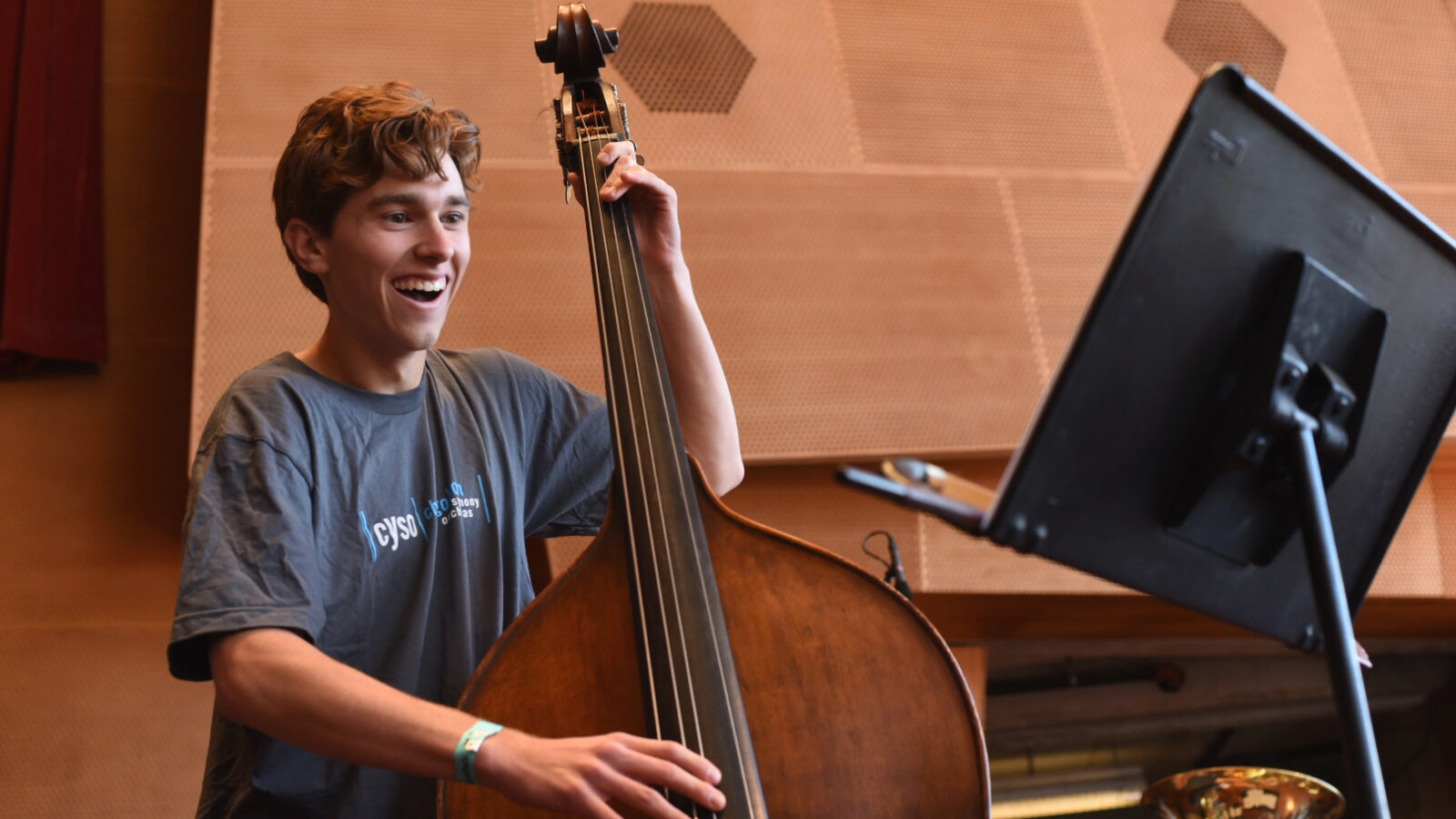
Discover why mastering just a few bars of music can make or break an audition and reveal your potential.
Read More.jpg)
Make a great first impression with proper college visit etiquette and smart questions.
Read More
A comprehensive roadmap to navigate the music school application and audition process successfully.
Read More.png)
Sometimes the smallest gestures-like a simple thank-you -- open the biggest doors. Discover how one note of gratitude changed everything.
Read More
Discover how college fairs tailored for music students can open doors to top programs and help you make meaningful connections before you ever audition.
Read More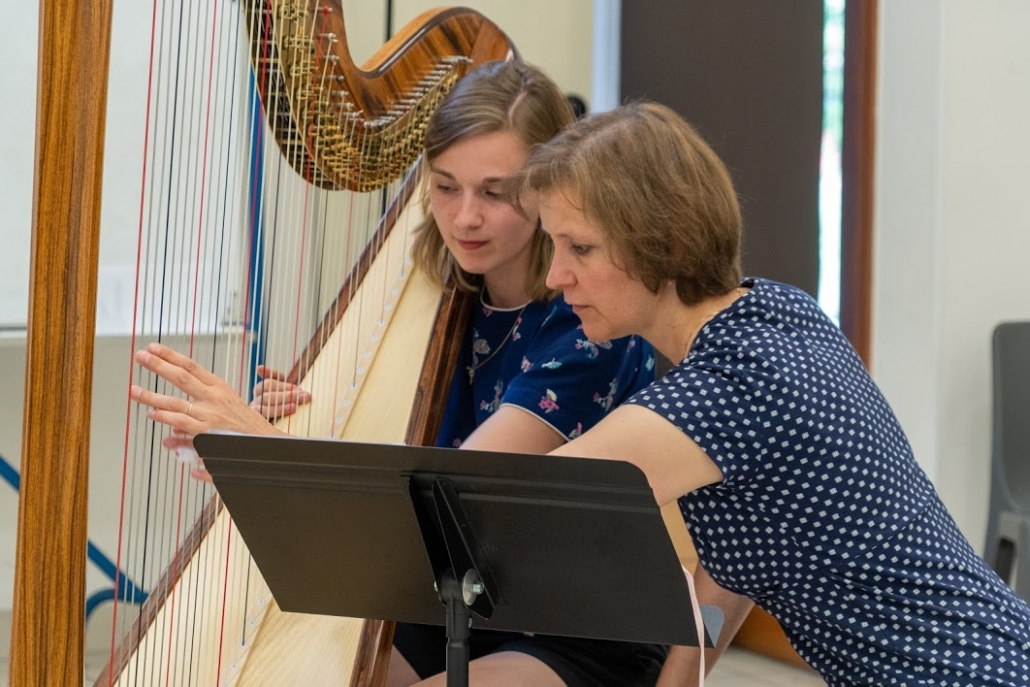
Private music lessons do more than sharpen skills — they unlock opportunity. Discover how one-on-one instruction builds confidence, hones performance, and opens doors to college auditions and scholarships.
Read More
Packed with proven strategies, expert insights, and inspiring real-life stories, it empowers musicians to turn performance anxiety into confident, expressive auditions.
Read More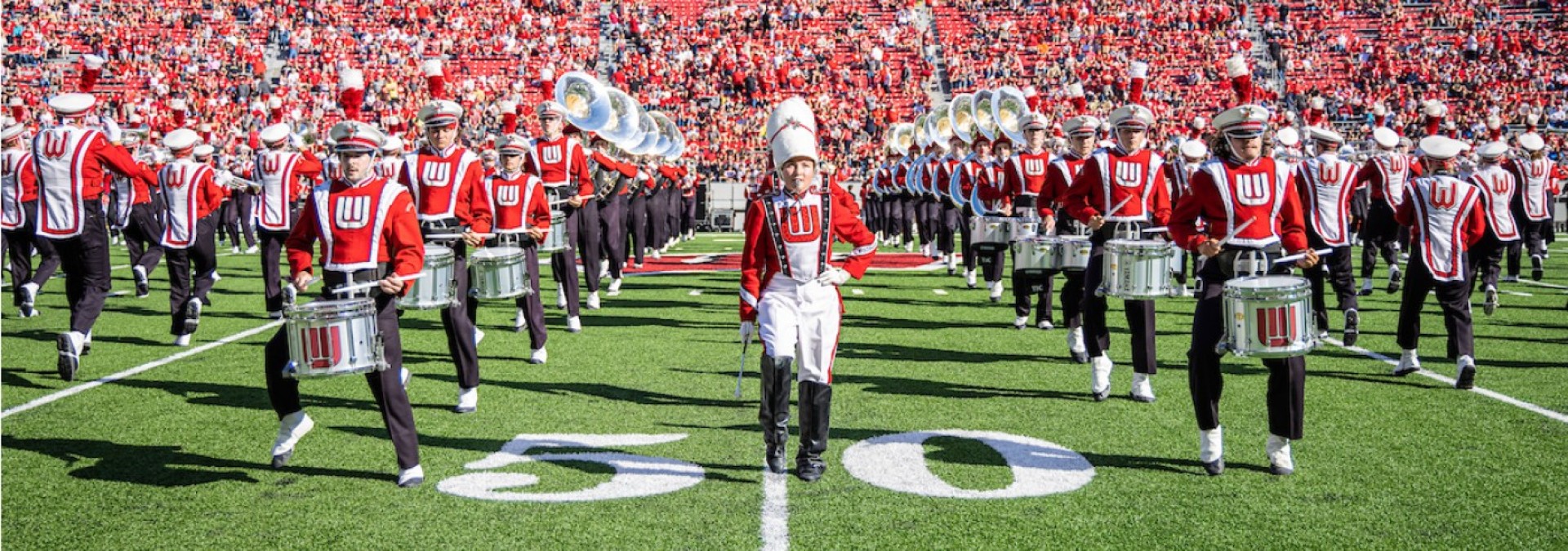
Discover how marching band can do more than make music—it can open doors to scholarships, leadership roles, and life-changing opportunities.
Read More.jpg)
Where nerves meet opportunity, growth begins. Discover how one powerful experience can elevate your student’s talent—and their college application.
Read More.png)
Professors don't just admit talent—they choose students they won't mind teaching every Tuesday morning before coffee, touring Europe with next spring, and introducing to their colleagues without bracing themselves first.
Read More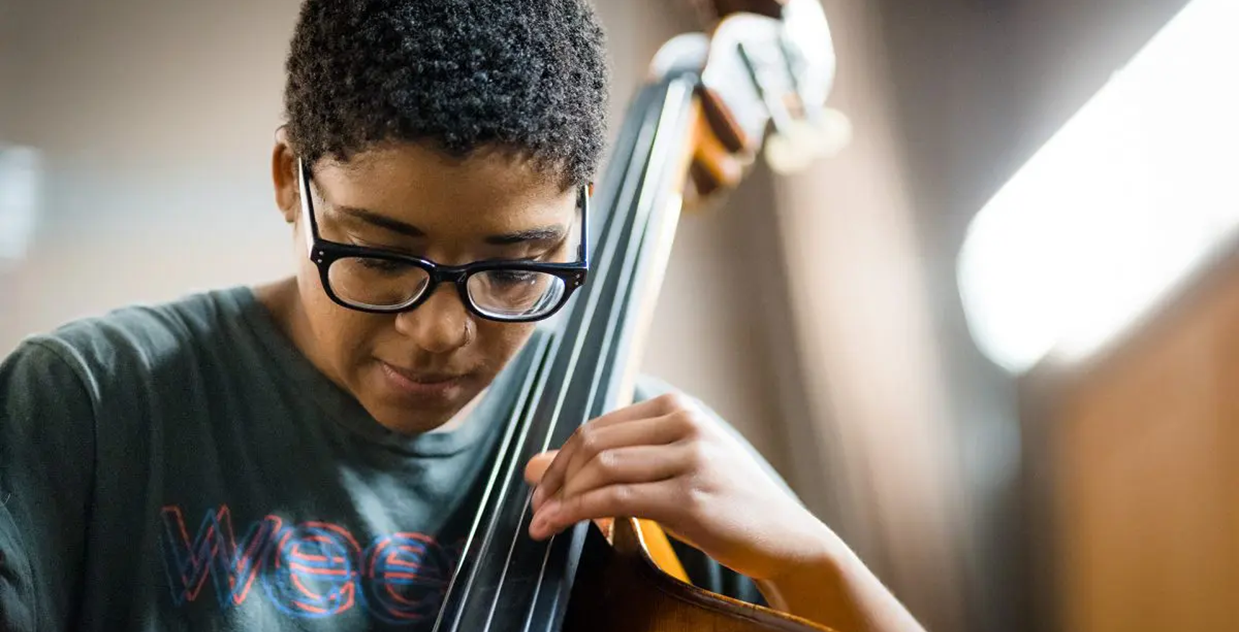
Think a music degree is out of reach because of cost? Think again. Whether you're aiming for college scholarships or exploring grants from arts organizations, this guide helps you uncover the many ways to fund your passion — and shows why applying early and often is the key to making your musical dreams a reality.
Read More
From nerves to notes, this guide helps student musicians face audition day with clarity, confidence, and control.
Read More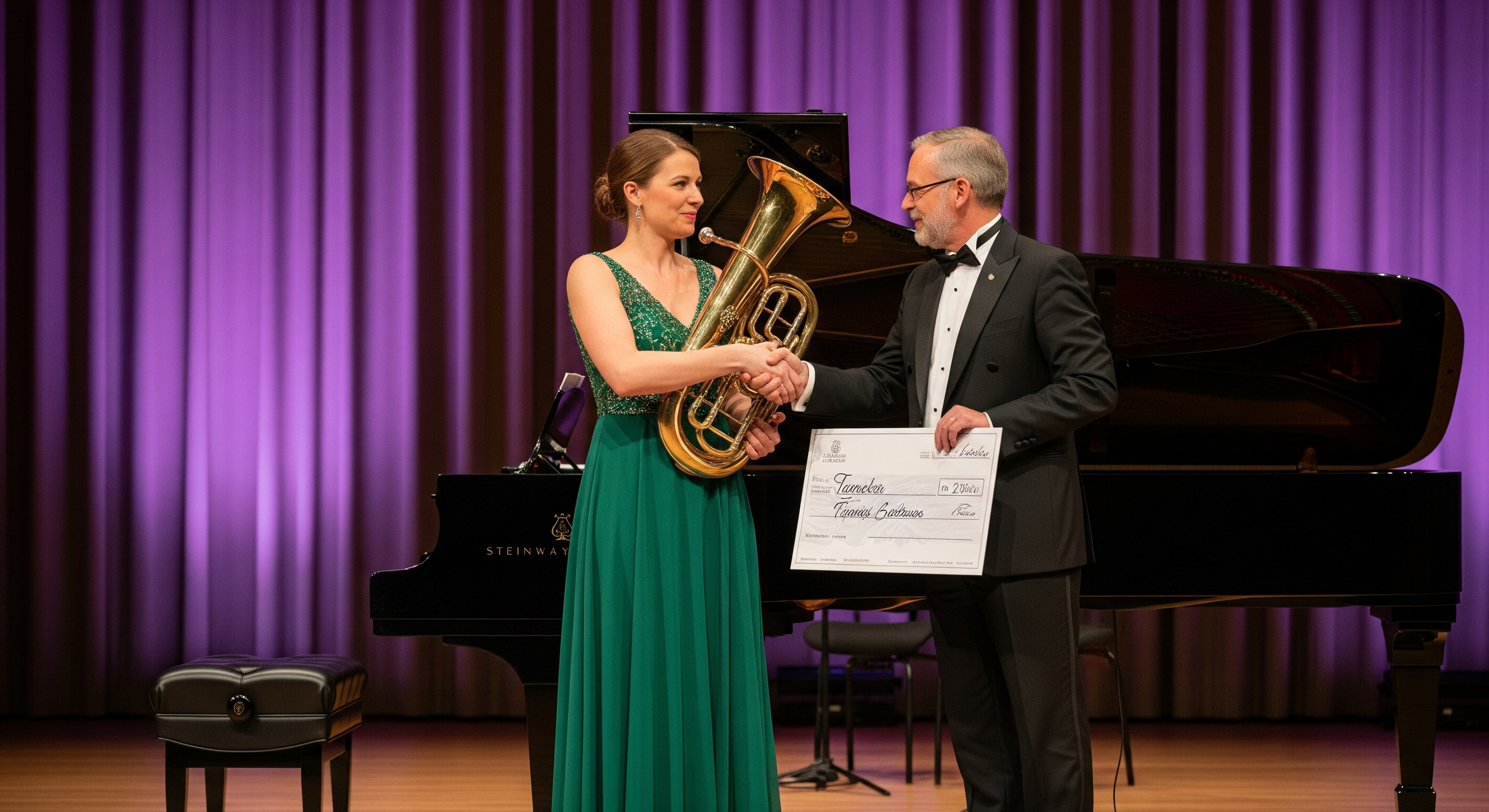
Shedding light on the financial freedom performing arts students deserve—and the billions in performing arts scholarships many never knew existed
Read More
Talent is just the beginning. Learn how the right moves today—owning your child's UTL name, building their brand, and shaping their story—can set your young performing artist on a path to lasting stardom.
Read More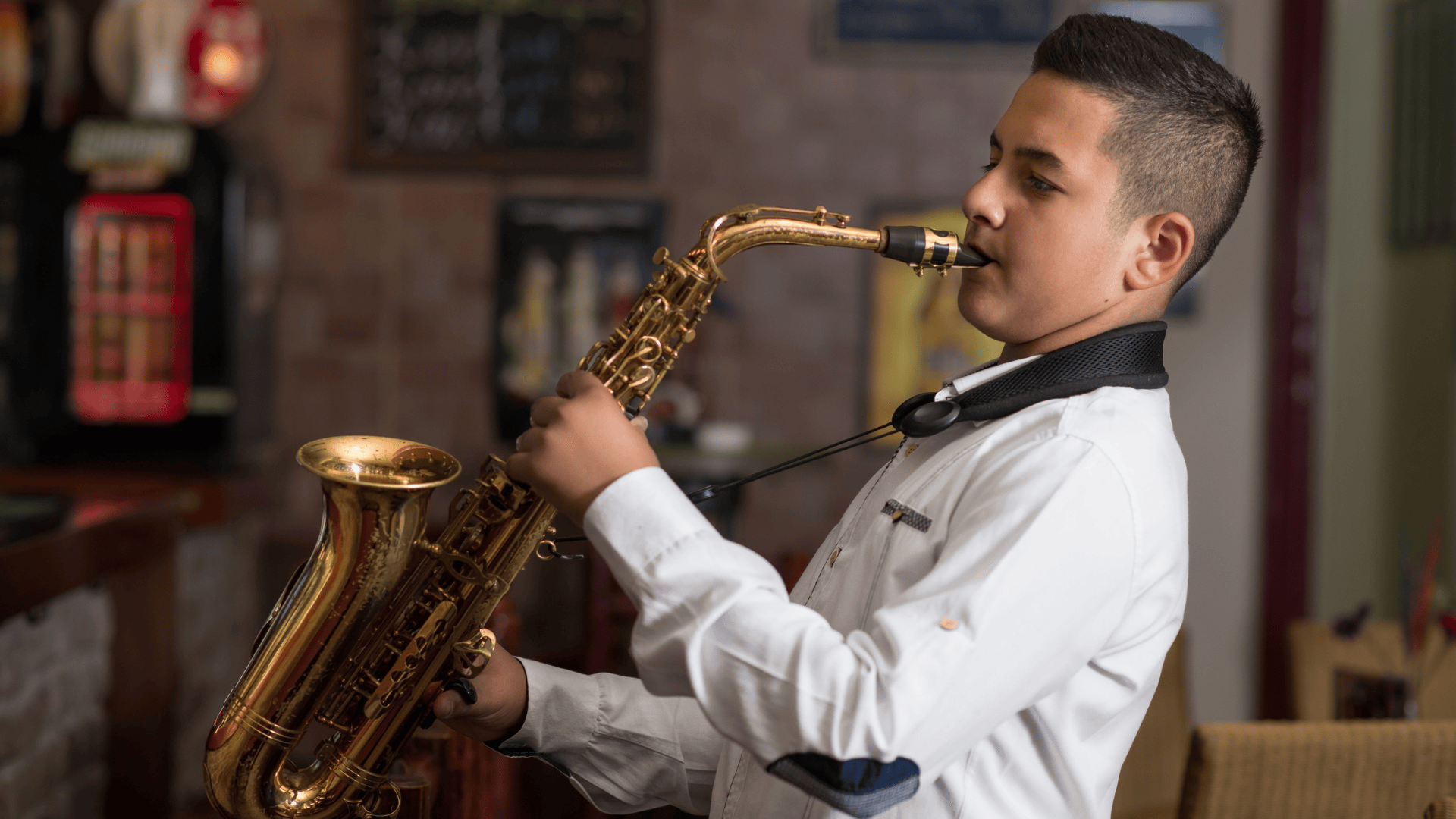
From first solo to final audition—how a carefully curated repertoire list becomes a student’s personal record of growth, readiness, and artistic identity.
Read More
Don't let travel troubles ruin your big audition! This guide has everything you need to ensure you and your instrument arrive.
Read More
Discover how decoding a composition’s name can elevate your performance, impress adjudicators, and help you stand out from the competition.
Read More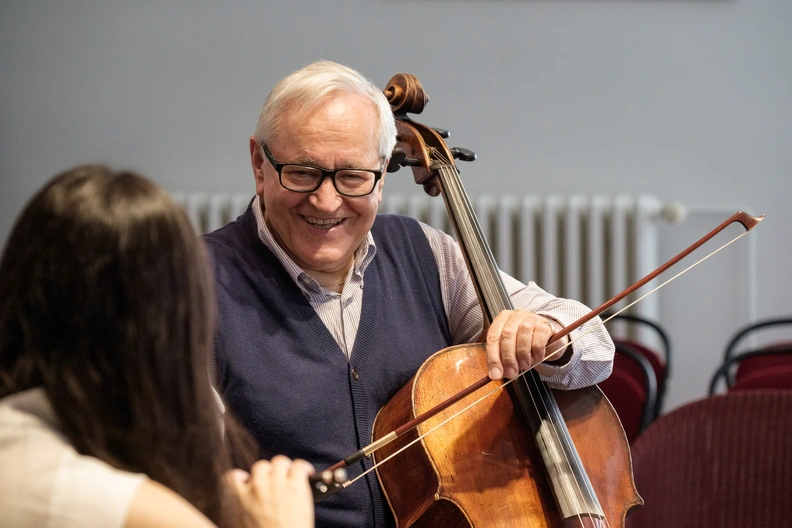
How one meaningful connection with a music teacher can open doors to college, scholarships, and a lifelong mentorship — starting now.
Read More
You don’t need fancy gear to capture talent — just these smart, affordable tips that could turn an audition video into a scholarship-winning performance.
Read More
Discover why a liberal arts education isn’t just about academics—it’s a powerful launchpad for aspiring musicians to thrive in every stage of their careers.
Read More.jpg)
Choosing the right music degree isn't just about a major -- it's about mapping the future of your artistry. Discover the key differences between BM, BA, BFA, and BS programs and find your perfect path.
Read More
From educators, performers, and industry insiders who got tired of hearing “music isn’t a real career” and decided to answer with Broadway box-office receipts, royalty checks, and Grammy paydays.
Read More
Where Purpose Meets Performance: How Service Can Help Pay for Your Music Degree.
Read More
For those navigating the leap from talent to training and tuning both heart and mind to what’s next—this is your guide to finding the path that fits, connects, and inspires.
Read More.jpg)
A month-by-month roadmap designed to help aspiring music majors confidently prepare for college auditions—one scale, solo, and strategy at a time.
Read More.jpg)
Beyond the Name: Finding the Place That Helps You Find Your
Read More.jpg)
Discover the real perks, the hidden costs, and how to tell if coaching is the right
Read More.jpg)
Mastering college applications means mastering deadlines. Success hinges on precision, preparation, and unwavering commitment to each institution’s unique demands.
Read More.jpg)
Because affording your dream school shouldn't be a dream.
Read More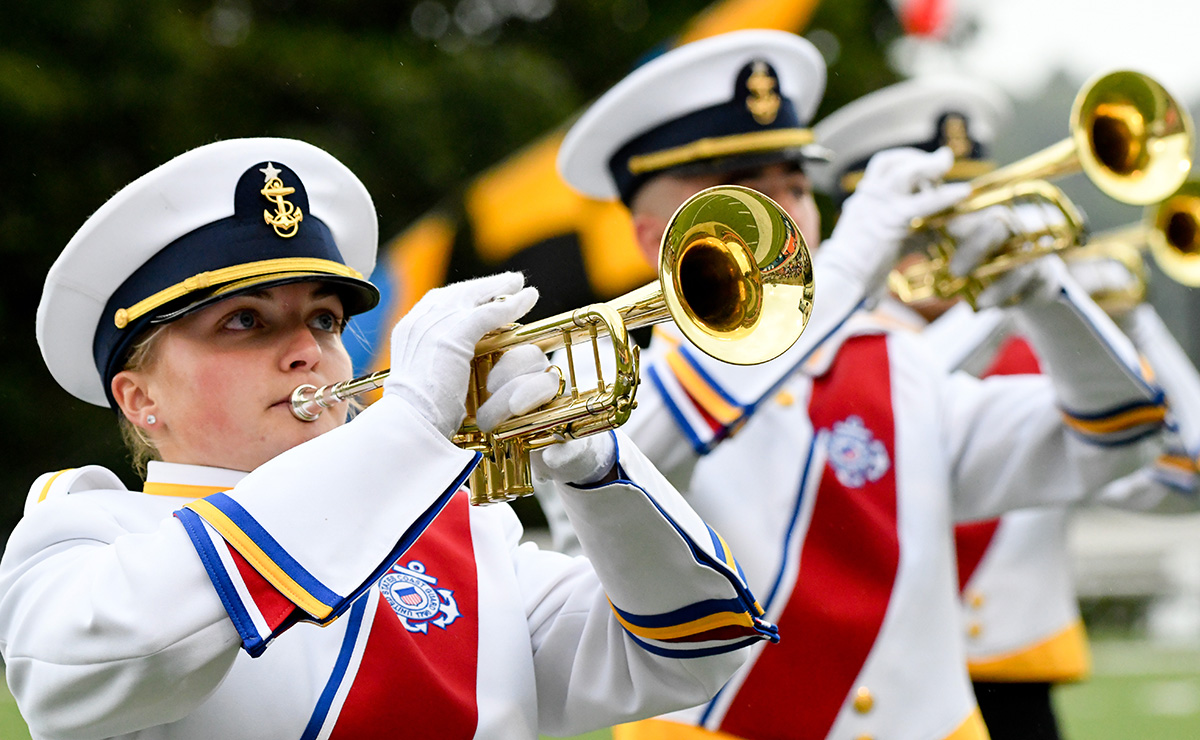
Where passion meets purpose — discover how talented musicians turn their love for music into a professional career serving their country.
Read More.png)
The music industry fuels the U.S. economy, driving schools to recruit creative, business-savvy students. Scholarships now target songwriters.
Read More.png)
How young artists can launch their careers and travel the world — without a college degree.
Read More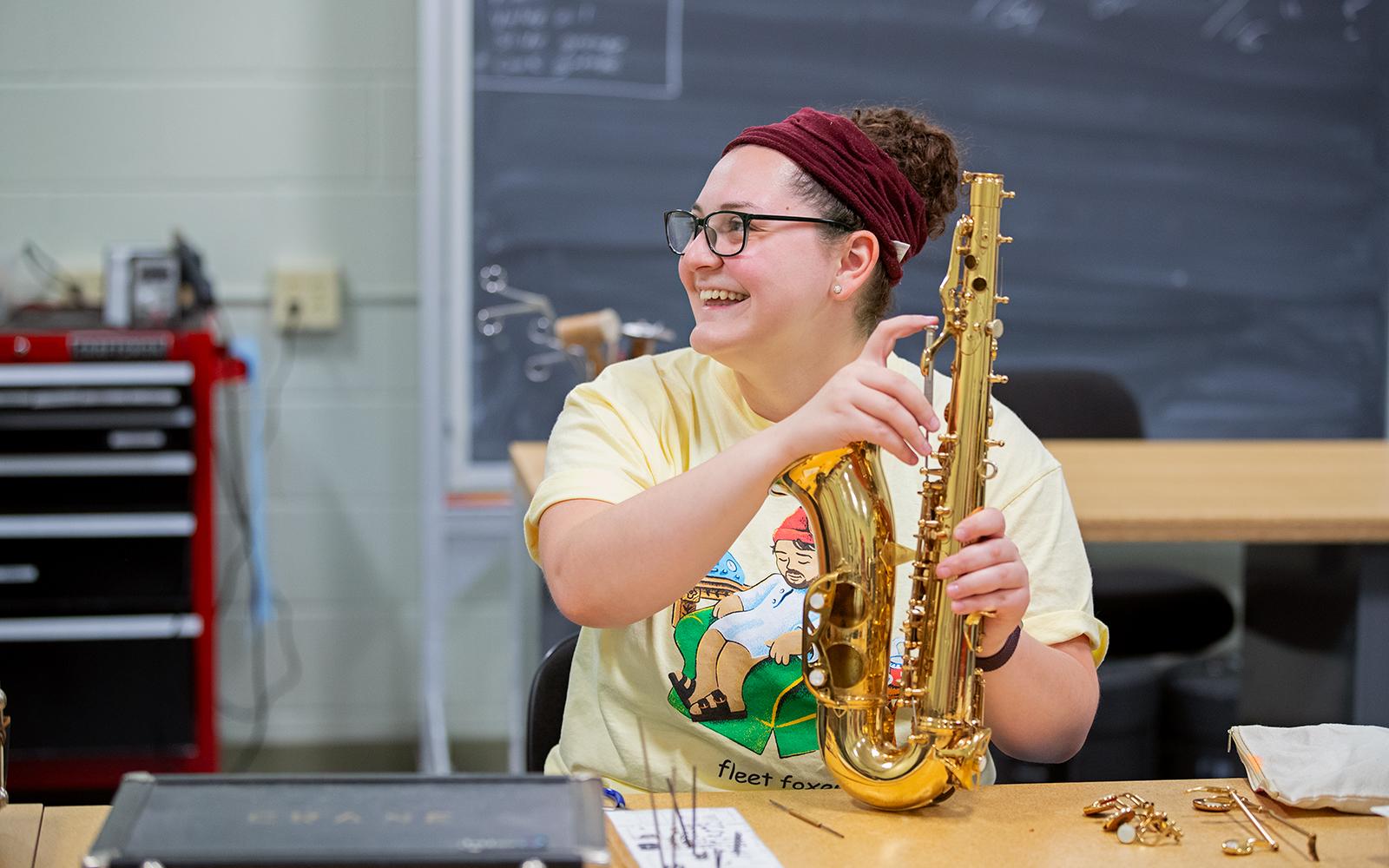
Because your talent deserves more than applause, it deserves a paycheck.
Read More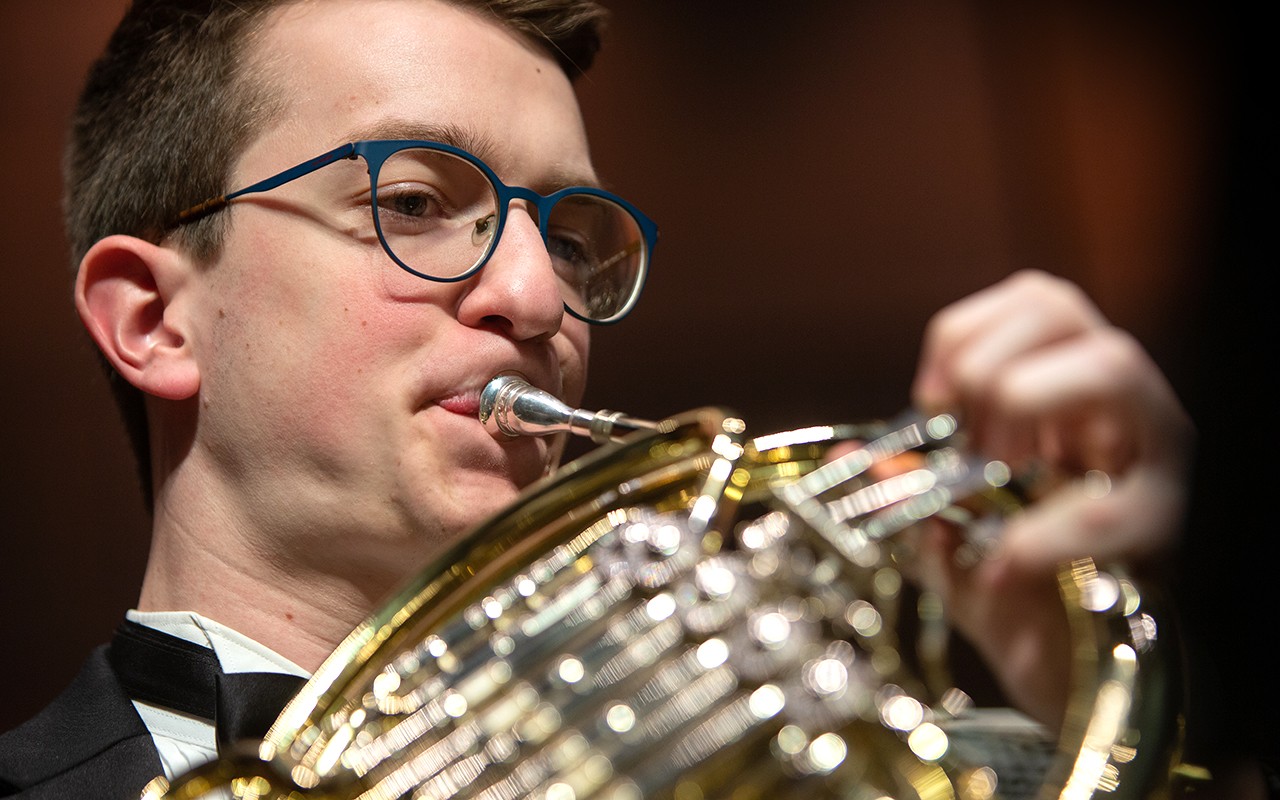
It’s not about impressing—it's about expressing.
Read MoreThe Accoladi Research Team is constantly tracking trends in performing arts collegiate recruiting, documenting scholarship procurement processes, and uncovering new resources for students and families. From the latest audition requirements to insider tips on securing funding, we’re always expanding our library— so, you can make informed choices with confidence.
